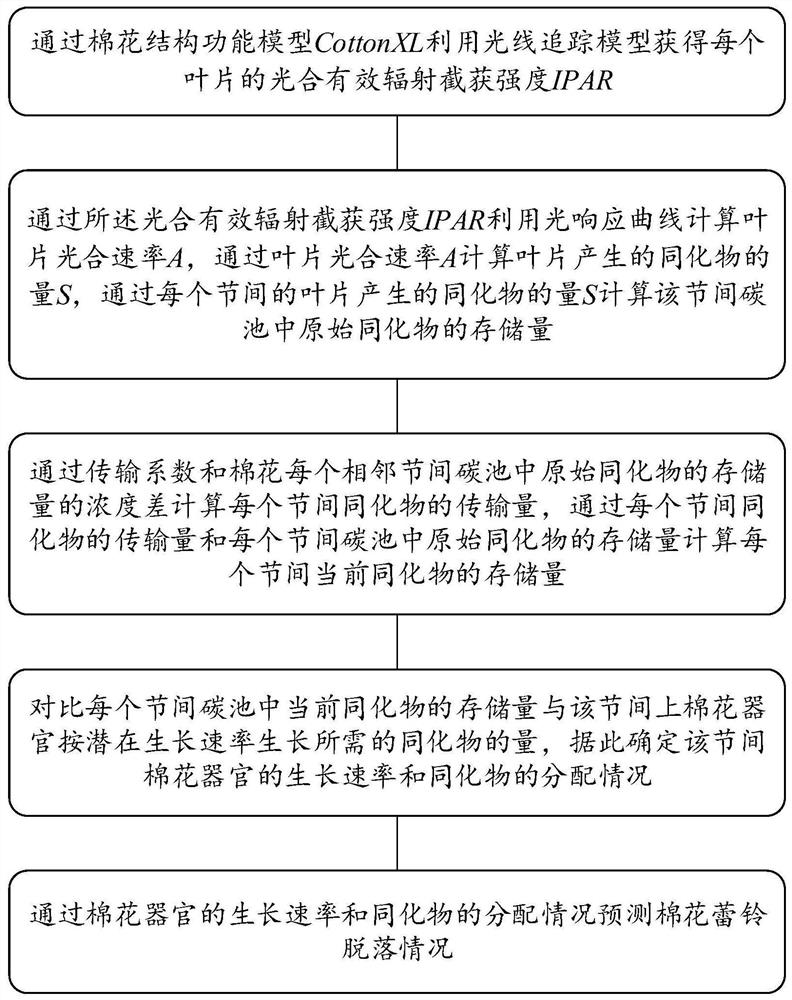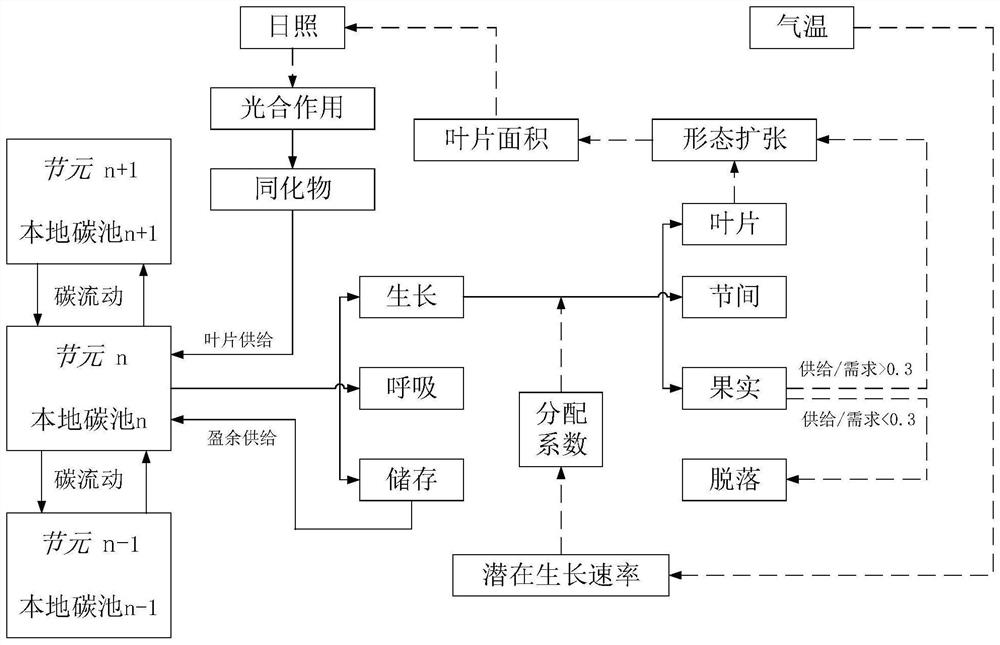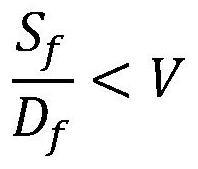Method for predicting shedding of cotton buds and bolls
A technology of flower buds and cotton, applied in the field of predicting cotton bud and boll shedding, can solve the problems of difficult parameterization, high cost, and difficult to accurately estimate leaf-scale light interception, and achieve the effect of promoting accurate prediction
- Summary
- Abstract
- Description
- Claims
- Application Information
AI Technical Summary
Problems solved by technology
Method used
Image
Examples
Embodiment 1
[0034] The vegetative node unit of the cotton plant includes an internode, a leaf and a branch leaf bud, and the reproductive node unit of the cotton plant includes an internode, a leaf and a fruit.
[0035] The invention provides a method for predicting the shedding of cotton buds and bolls, specifically as figure 1 shown. It includes the following steps: use the cotton structure-function model CottonXL to obtain the intercepted intensity IPAR of photosynthetically active radiation for each leaf by using the ray tracing model; calculate the photosynthetic rate A of the leaf through the intercepted intensity IPAR of the photosynthetically active radiation using the light response curve, and calculate the leaf photosynthetic rate A through the photosynthetic rate A of the leaf The amount of assimilate produced S, through the amount S of assimilate produced by the leaves of each internode, the storage capacity of the original assimilate in the internode carbon pool is calculated...
PUM
 Login to View More
Login to View More Abstract
Description
Claims
Application Information
 Login to View More
Login to View More - R&D
- Intellectual Property
- Life Sciences
- Materials
- Tech Scout
- Unparalleled Data Quality
- Higher Quality Content
- 60% Fewer Hallucinations
Browse by: Latest US Patents, China's latest patents, Technical Efficacy Thesaurus, Application Domain, Technology Topic, Popular Technical Reports.
© 2025 PatSnap. All rights reserved.Legal|Privacy policy|Modern Slavery Act Transparency Statement|Sitemap|About US| Contact US: help@patsnap.com



